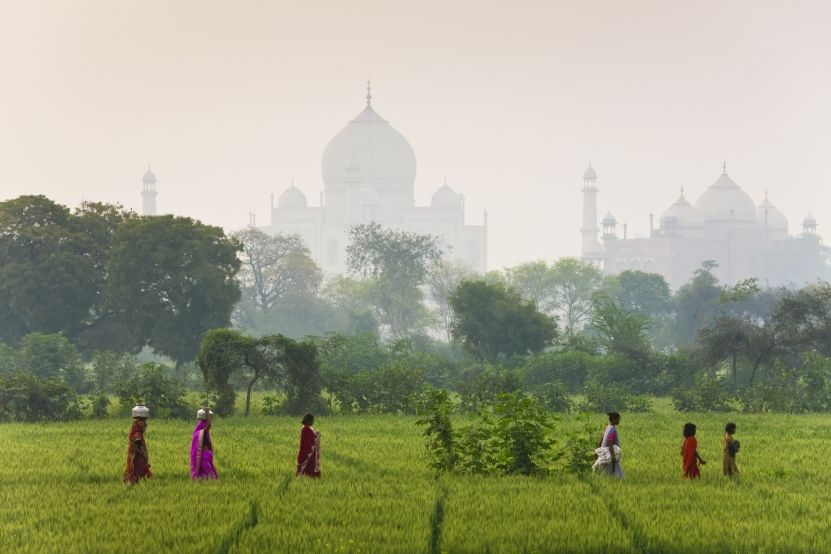
Even as it is still licking its wounds from the Covid-19 crisis, India is being rocked by social unrest, prompting an increasingly harsh crackdown by the authorities.
The economy recovers amid inflationary pressures
Looking first at the economy, the signals are still mixed. While this year’s second-quarter wave of the epidemic was admittedly less destructive than the Q2 2020 wave, it nevertheless once again hit industrial production, which slowed sharply. The latest available figures show that the recovery picked up somewhat in July but production over the first seven months of the year is still below 2019 levels.
In the short term, the main economic risk to India comes from soaring energy prices. Given the country’s heavy dependence on oil (25% of total imports), higher prices could not only upset the trade balance – which, while never in surplus, had improved during the crisis – but also fuel inflation, which stabilised at around 5.5% over the last quarter.
This also complicates matters for the Reserve Bank of India (RBI), which has held its base rate unchanged at 4% since May 2020 and whose minutes give no indication of any appetite for monetary consolidation before the second half of 2022. Even if its core component is not immediately affected, quickening inflation driven by rising energy prices could force the RBI to review its calendar, especially if the rest of the emerging world begins to hike interest rates, as seems likely.
Controlling inflation and energy prices is an especially tricky issue because it is often a breeding ground for social discontent. And India is already experiencing profound social unrest linked to the conflict between farmers and the government.
The farmers’ revolt turns political
With the farmers’ revolt rumbling on for over a year and no apparent solution in sight, events took a dramatic turn on 3 October when nine people – four of them farmers – were killed in violent clashes at a protest that coincided with a visit to Uttar Pradesh by the junior home affairs minister.
In this highly nationalist state governed by a Hindu monk, authorities were quick to respond by banning public gatherings, suspending internet services, closing main roads and arresting members of the opposition keen to come out in support for the farmers.
Although farmers continue to demand that laws passed in September 2020 aimed at liberalising agricultural markets by scrapping the system of state-guaranteed prices be withdrawn, the movement has taken a more political turn over the past few weeks.
Opposition parties (particularly the Congress Party) had hitherto failed to politicise the movement, but the tone has changed at the last few protests. In Uttar Pradesh for example, where the daughter of former prime minister Rajiv Gandhi and granddaughter of Indira Gandhi (India’s only woman prime minister) is standing for the Congress Party in the regional elections, protest organisers have clearly shown their support and called for the defeat of the ruling party, Narendra Modi’s BJP.
This no doubt goes some way towards explaining the edginess of the region’s authorities, who understand the critical importance of rural society in India, where the agricultural sector employs more than one out of every two people but is the main source of income for nearly 70% of the population.
With 200 million people, Uttar Pradesh is India’s most populous state and a politically sensitive region: won comfortably by the BJP in the 2017 elections, the state is also one of the most repressive towards Muslims, another highly charged issue. It is no surprise, then, to see positions on these two socially explosive issues (farmers’ revolts and increasing efforts to hunt down Muslims) becoming more radical, especially at a time of economic crisis. The February 2022 regional elections will be a good test of the popularity of Narendra Modi, who still bears the scars of a crushing defeat in West Bengal in May 2021 despite having spent huge amounts and held numerous political rallies in the middle of an epidemic outbreak. Losing Uttar Pradesh would be an even more symbolic defeat and would bode ill for the 2024 general election.
The escalating crackdown goes hand in hand with the politicisation of the movement, which is not at all what Modi – weakened as he is by a very deep-seated economic crisis that has considerably affected the social fabric, in particular by destroying jobs – needs. And this chapter is not over yet: only 18% of India’s population is fully vaccinated (48% have received a first dose), which leaves the risk that a fresh outbreak of the epidemic could further slow the recovery.
Sophie Wieviorka







